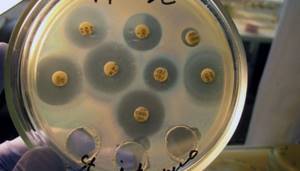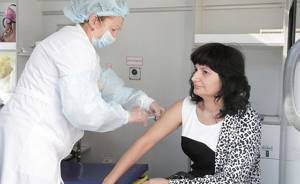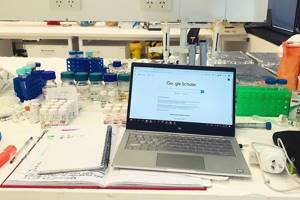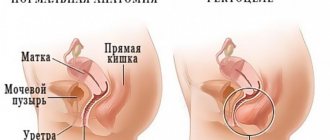Over the eighty years of their existence, antibiotics have become firmly established in medical practice and have radically changed the approach to the treatment of many infectious diseases. Diseases that were previously considered fatal can now be cured quite quickly and easily without complications or negative consequences for the body. However, the effectiveness of antibiotic therapy depends on many factors. First of all, the medicine must be prescribed by a doctor, since each drug has its own spectrum of antimicrobial action. Those pills that helped last time against a sore throat may turn out to be useless in the future if the pathogen is different. Secondly, you should strictly adhere to the dosage of the drug and take it for the recommended time. Otherwise, the bacteria will not die, but will mutate and become resistant to this product.
In this way, a superinfection will develop, against which it will be difficult to select medications (sometimes even impossible). And finally, it is necessary to take into account the compatibility of ABP with other drugs and food (their pharmacological effect can be enhanced or weakened).
Is it possible to take antibiotics during chemotherapy?
Often, the reason for prescribing antimicrobial drugs to a cancer patient is the inflammatory consequences of antitumor chemotherapy, when a decrease in the body's immune defenses to a minimum level allows the active reproduction and spread of bacteria.
Antibiotics and chemotherapy are not used simultaneously, with the exception of local antibacterial ointments for skin inflammatory complications of immuno-oncological drugs. Immuno-oncological drugs do not kill cells, but only activate lymphocytes to fight the tumor; mild autoimmune skin lesions do not require a reduction in the dose of the immune agent. For grade 3-4 skin infections, antibiotic tablets are started, and the immune drug is discontinued until clinical symptoms reach grade 1-2.
In principle, pharmacology does not prohibit the simultaneous use of drugs from these two groups, because chemically antibiotics are completely compatible with chemotherapy, that is, an “explosive mixture” that is dangerous to health is not created in the body. However, in clinical practice, either an antibiotic or an antitumor cytostatic is used, often sequentially - an antimicrobial agent is prescribed after chemotherapy, but never in parallel.
Antibiotics and chemotherapy solve various problems of a sick person: antimicrobial drugs fight inflammatory processes when, for health reasons, any chemotherapy is contraindicated, because it can aggravate the severity of inflammation or infection due to active suppression of the immune system.
“In Australia you can’t buy a single antibiotic in your life without a prescription”
- Alina, 2 years ago it became known that in America a patient died from an infection caused by a superbug - that is, a bacterium resistant to modern antibiotics. The media and experts have repeatedly talked about the “end of the era of antibiotics,” when they will completely stop helping patients. What is the current situation with the use of drugs?
— If we say “the end of the era of antibiotics,” then it is correct to say “the end of the era of antimicrobial drugs.” Why? Because not only bacteria have developed drug resistance, but also, for example, fungal diseases, as well as viruses.
We have used and will continue to use antibiotics; for many individual cases and individual patients they are effective, but, of course, there are cases in which they no longer help. This is partly the patients' fault.
- How? Here I am an ordinary patient, the doctor prescribed me something - I drink it, is it my fault?
— There are cases when the patient does not go to the doctor, but buys antibiotics himself. Antibiotics should only be sold with a prescription. For example, in Australia you cannot buy a single antibiotic in your life without a prescription. We often have cases where a person with a sore throat, not knowing what caused it, a bacteria or a virus, buys an antibiotic in the hope that he will feel better. Moreover, without even understanding what group this antibiotic is. So, of course, it is important to get a prescription.
Photo prokazan.ru
We often have cases where a person with a sore throat, not knowing what caused it, a bacteria or a virus, buys an antibiotic in the hope that he will feel better. Moreover, without even understanding what group this antibiotic is
Doctors also need to be responsible, they need to find out what caused the disease (special laboratory tests) and only then prescribe or not prescribe an antibiotic. It is advisable to keep a record (for both the patient and the doctor) of which antibiotics you took. It is better to alternate antibiotics. If you often have the same disease, and you constantly take the same antibiotics, then after some time there is a chance that they will stop helping.
Indications for the use of antibiotics in oncology
In the life of an oncology patient, there are enough opportunities for the activation of pathogenic microflora with the formation of local or widespread inflammation, often resulting in an extensive purulent process and sepsis due to insufficiency of immunity after chemotherapy. The most common infectious complication in oncology is pneumonia; it has become one of the leading causes of death in cancer patients. Slightly less often after chemotherapy, infections of the oral cavity, candidiasis of the esophagus, urinary tract infections due to tumor disorders of their patency, streptococcal skin lesions and, in 5%, purulent paraproctitis are observed.
By producing special substances, a progressive malignant tumor also actively suppresses the immune system, but the most likely and most common cause of infectious complications is a decrease in the level of leukocytes as a result of chemotherapy, and mainly the fraction of segmented or neutrophils. A drop in the absolute number of neutrophils to 500 cells per milliliter of blood, when the norm is more than 1500, increases the likelihood of developing an infection by 50%.

Risk factors for the development of infectious inflammation in a cancer patient against the background of a decrease in the level of neutrophil leukocytes after chemotherapy:
- mucositis grade 3-4 , when normal cells die in the mucous membrane of the digestive tract as a result of chemotherapy, forming focal defects in the mucous membrane through which pathogenic microorganisms enter the blood;
- enterocolitis - damage to the intestinal mucosa by cytostatics disrupts the balance and composition of the intestinal microflora, which is actively occupied by other classes of bacteria and fungi;
- permanent vascular catheters , including ports, on the inner surface may contain pathogenic microflora from the air;
- or kidney failure , as well as severe concomitant diseases , aggravated as a result of antitumor treatment, change tissue homeostasis and contribute to blood stagnation in the intraorgan circulatory network, creating ideal conditions for the life and reproduction of pathogenic agents;
- an initial decrease in resistance to certain types of microorganisms encapsulated in those suffering from malignant diseases of lymphoid tissue;
- Staying in a hospital is always associated with the possibility of infection by constant hospital microflora, because patients with a variety of diseases are admitted to the hospital, including hidden carriers of pathogenic microflora.
Reasons for prescribing antibiotics to a cancer patient:
- against the background of a decrease in neutrophils, the patient has a temperature above 38° twice a day or once more than 38.3°, which is called febrile neutropenia ;
- X-ray reveals pneumonia with corresponding clinical symptoms;
- a purulent focus was found in the tissues, most often an abscess;
- systemic inflammatory reaction syndrome developed in the absence of obvious pneumonia and other inflammatory processes or purulent foci.
We will separately discuss systemic inflammatory response syndrome , which is considered a manifestation of the generalized spread of pathological microflora or a sign of a hidden inflammatory focus that could not be detected. To diagnose the syndrome in any person, and not just cancer patients, it is enough to identify in any combination only two of the five signs indicated:
- an increase in the patient's body temperature above 38° or below 36°;
- leukocytosis over 12 thousand or, conversely, leukopenia less than 4 thousand, even without calculating the absolute number of neutrophils;
- tachycardia more than 90 beats per minute;
- increased breathing rate more than 20 per minute;
- obvious or only suspected infection in the patient.
Book a consultation 24 hours a day
+7+7+78
If white blood counts decrease in combination with high fever, treatment with antibiotics should begin immediately; no more than an hour should be allowed for the entire preliminary examination and identification of the source of infection, if any. In most cases, the antibiotic is chosen empirically, because identifying the pathogen and determining its sensitivity to antibiotics is a long process, and there is no time to think. Very often, with febrile neutropenia, the infectious focus is never found, which also indicates the effectiveness of antibacterial therapy, which prevents the formation of inflammation visible to the eye.
There are no contraindications for the use of any groups of antibiotics or individual drugs; the use of obviously ineffective antibacterial drugs is prohibited. The most common microorganisms that cause infections in Russian patients are known, and for each microorganism the spectrum of antibiotics to which it should be sensitive is known. However, each patient’s blood is tested for sterility and cultured, so that if the standard combination of antibiotics is ineffective, the treatment regimen can be changed to the optimal one.
How could they get into honey?
Experts note that antibiotics could have gotten into the products either due to the beekeeper’s failure to follow the instructions for using the veterinary drug, or due to the use of antibiotics from a regular pharmacy.
Metronidazole (a group of nitroimidazoles) discovered by experts is part of a common drug. Experts suggested that beekeepers could use this drug as a preventive measure against infectious bee diseases. For example, drugs based on metronidazole and other antibiotics can be used to treat ascopherosis, an infectious disease that is caused by the fungus Ascosphera apis and affects drone and bee larvae three to four days old. Medicines are usually dissolved in sugar syrup, which is given to the bee colony.

Are burgers high in antibiotics, salt, meat and calories? More details
Compatibility of antibiotics and chemotherapy
Antibiotics that negatively affect the white germ of hematopoiesis should not be used in a patient with leukopenia to avoid the accumulation of side effects. When hematopoiesis is suppressed, along with treating the infection with antibiotics, it is necessary to stimulate the white sprout of the bone marrow with a colony-stimulating factor, which accelerates the production and maturation of leukocytes.
During chemotherapy with nephrotoxic cytostatics, it is not advisable to treat inflammation with kidney-damaging antibiotics. While no drugs have been found to relieve liver and kidney toxicity during chemotherapy, there are no ways to restore liver and kidney damage during antimicrobial treatment.
Likewise, antimicrobial drugs that damage the auditory nerve are not compatible with ototoxic chemotherapy drugs.
There are no absolutely safe drugs, however, the first thing you need to focus on when choosing an antibiotic is the sensitivity of the microbial agent to the drug.
Bakposev

Bacterial culture is the decisive analysis in identifying the causative agent of the disease. The biological fluid is placed on special nutrient media and then the growth of the cultures is examined.
In addition to identifying bacteria or fungi, their sensitivity to various antibacterial and antimycotic drugs is also analyzed.
This allows you to select exactly the drug or group of drugs to which the microbe is most sensitive, and helps to avoid the formation of drug resistance.
If the drug is selected based on the antibiogram data, it usually does not require replacement during treatment.
However, despite its accessibility and information content, bacterial sowing is not without its drawbacks. This analysis usually takes some time to complete. Most often, the growth of bacterial cultures occurs within 5–7 days. And it is precisely this factor that does not allow the use of bacterial culture in the routine prescription of antibiotics. And the selection of a drug for the treatment of infections is carried out empirically.
The use of antibacterial agents after a course of chemotherapy
Clinical recommendations offer many combinations of one and a half dozen antibacterial drugs from different groups. Treatment of febrile neutropenia begins with intravenous administration of combined penicillin (tazozyme) every 6 hours or a fourth-generation cephalosporin, requiring three injections throughout the day. If the patient has indications of an allergic reaction to penicillins or the condition has not improved after three days of antimicrobial therapy, they resort to carbapenem.

The presence of a purulent focus in soft tissues, for example, an abscess in the tissue of the rectum - paraproctitis, or pneumonia proven by x-ray examination, or severe damage to the intestinal mucosa against the background of decreased immunity, “boosters” with a wide spectrum of effects from the group of aminoglycosides or fluoroquinolones. Naturally, also only intravenously for speed of action and increased efficiency.
The presence of methicillin-resistant staphylococcus changes the initial antibacterial therapy to the drug of choice - vancomycin and the like, and, if necessary, all of the above antibiotics become an addition to it.
Standard programs and drug combinations of antibiotics have been developed to relieve infections caused by several bacterial agents, including those resistant to reserve drugs and taking into account possible intolerance to patients.
Artificial additives, which unscrupulous sellers may add to honey to increase its mass and visual appeal, usually do not cause direct harm to the health of the consumer. But antibiotics, unfortunately, yes. It is known that the constant use of honey with antibiotics makes the human body resistant to this type of medicine, and, therefore, if there is a real need for treatment, it will be extremely difficult to carry out treatment.
How do antibiotics get into honey?
The main way antibiotic breakdown products get into honey is through the treatment of bees. These insects are known to be susceptible to more than 20 infectious diseases. Sudden changes in weather conditions, lack of food, prolonged rains and high humidity - all this can cause bee diseases, which in our time are treated with antibiotics. However, some beekeepers also use this medicine for disease prevention; it is not a proven way to avoid bee diseases.
For beekeeping, there is a list of approved medications that are added to the hives if necessary. The dosage and duration of treatment should be strictly controlled.
How to detect and get rid of antibiotics in honey?
It is possible to detect drugs in honey in laboratory conditions. Modern methods of express analysis of honey can detect not only antibiotic residues, but also any other substances, even in the smallest concentration.
It is impossible to remove antibiotics from treated honey from treated bees. The producer should for a certain period stop selling such honey for at least several weeks, and sometimes for two or three seasons. This depends on the rate of breakdown and elimination of the particular type of antibiotic.
How to buy honey without antibiotics?
When choosing a honey supplier, look for certificates. In February 2020, the honey was internationally certified and meets the requirements of the international food safety standard FSSC 22000. This international food and drink certification scheme is currently the forefront of the European market.
In addition, our honey, which comes from more than 150 professional apiaries (90% coverage of the country's honey fields), has undergone several additional tests:
- annual external independent audits (McDonald`s, Kraft Foods);
- testing by independent laboratory QSI (Germany);
- compliance with the requirements of international companies (METRO, KFC);
- three-level quality control in our own laboratory.
Buy and enjoy quality honey!
What side effects does the combination of substances cause?
Combinations of antibiotics with different mechanisms of action on bacteria solve the problem of stopping the inflammatory process as quickly as possible and at the same time helping to slow down the formation of drug resistance.
In combinations, it is preferred not to include drugs with unidirectional toxicity or cross-resistance. Antibacterial substances suppress not only pathological, but also normal bacteria, leading to an imbalance of microflora in the intestines. The place freed from bacteria is taken by fungi, the fight against which has its own difficulties and can be delayed, fortunately, the immunity suppressed by chemotherapy is restored and lymphocytes begin their main duties - protection from any pathological agents.
Each drug has a negative effect on the body; the range of such manifestations is well studied, but unpredictable in each individual case. That is why there are doubts about the need for prophylactic administration of antibacterial drugs at a high risk of developing febrile neutropenia. Greater expediency is seen in the prophylactic administration of hematopoietic stimulants rather than in an antimicrobial agent.
However, if absolutely necessary, and the extreme need is a pre-existing infection or neutropenia with high fever, one must choose the lesser of two evils. The lesser evil is the possible, but not obligatory, side effects of the antimicrobial agent, the greater evil is the prospect of sepsis and a real threat to the patient’s life.
Treating an infection in a healthy person is a complex task; treating infectious complications of chemotherapy is a crossword puzzle with many unknowns and the only goal is to save from sepsis and death. The doctors at our clinic will help in any situation, even the seemingly hopeless one. Our interest is your health, and for this we are ready to do anything.
Book a consultation 24 hours a day
+7+7+78
Bibliography:
- Koroleva I. A., Bolotina L. V., Gladkov O. A., et al. /Practical recommendations for drug treatment of dermatological reactions in patients receiving antitumor drug therapy // Malignant tumors: Practical recommendations RUSSCO #3s2, 2020 (volume 8).
- Sakaeva D. D., Orlova R. V., Shabaeva M. M./Practical recommendations for the treatment of infectious complications of febrile neutropenia and the prescription of colony-stimulating factors in cancer patients // Malignant tumors: Practical recommendations RUSSCO #3s2, 2020 (vol.


- Feld R. /Bloodstream infections in cancer patients with febrile neutropenia// Int J Antimicrob Agents 2008; 32 (Suppl).
- Wolf HH., Leithäuser M., Maschmeyer G., et al. /Central venous catheter-related infections in hematology and oncology. Guidelines of the Infectious Diseases Working Party (AGIHO) of the German Society of Hematology and Oncology (DGHO) // Ann Hematol 2008; 87.
- Walsh TJ, Teppler H., Donowitz GR, et al./ Caspofungin versus liposomal amphotericin B for empirical antifungal therapy in patients with persistent fever and neutropenia // N Engl J Med; 2004; 351.
Alternatives to Antibiotics
“Some researchers are frightening us that the diseases that we are now fighting with antibiotics will again begin to claim lives. Are we really getting there?
“I don’t know if we can even plan anything at least five years in advance.” All I know is that a lot of work is being done to ensure that such predictions do not become true. Here in Nature in 2017 or 2018 there was a publication about the discovery of a new class of antibiotics - arylomycins, which showed themselves to be effective against various bacteria. Science is developing, and I myself tend to think positively. But of course, we ourselves must be careful and take the measures that we are advised to take, for example, getting vaccinated and taking the intake and choice of antibiotics seriously. Well, wash your hands with soap, of course.

Photo by Alexander Gerasimov / evening-kazan.ru
Alternatives are mainly aimed at preventing infections from occurring (prophylaxis)
There is a very large review in The Lancet; in 2020 they published all possible alternatives to antibiotics - 19 alternatives were presented there, 10 of which were main ones. This top ten included vaccination, the use of antibodies and bacteriophages. Alternatives mainly focus on preventing infections from occurring (prophylaxis).
As for treatment, yes, as long as antibiotics are ahead of the curve. There are also areas such as the use of lysine (an amino acid) and special enzymes that are used by bacteriophages to destroy the microbial cell membrane as an alternative to antibiotics, but research here is at an early stage. Therefore, they are not yet considered among the main alternatives.
— How is the problem of antibiotics solved in Russia and in your homeland, Kazakhstan?
— I assume that everyone follows the precepts of the World Health Organization. She released a big, big document with all the recommendations on how all countries should act in this situation. In Russia, the Ministry of Health has submitted to the government a strategy to combat microbial resistance until 2030, which means they have measures that they plan to take.
- Let's move on to your research. How does it help solve the antibiotic problem?
— My research is related to a method called photodynamic therapy. To explain it in the simplest terms, this is when you use light and a medicine that reacts to it (photosensitive medicine). How it works? You have an infected area, you inject it with a photosensitivity drug, and irradiate it with a laser at a certain wavelength. Drug molecules absorb light quanta in the presence of oxygen, which leads to the generation of toxic singlet oxygen and highly active radicals. Singlet oxygen and radicals cause the death of microbes.

Photo vk.com
I am currently working on using nanoparticles together with a photosensitivity drug to increase the effectiveness of therapy - if you use nanoparticles together with a drug, the drug penetrates deeper into the tissue and accordingly increases the effectiveness of therapy
— Can this method replace antibiotics?
“He won’t be a complete alternative.” If a person’s blood is infected, then such therapy will not help. This therapy can only be used for localized infectious diseases: skin infections, bacterial infections of the nasal cavity, throat, ear infections, lung infections, and genital tract infections.
— At what stage is the research now?
— I am currently working on using nanoparticles together with a photosensitivity drug to increase the effectiveness of therapy - if you use nanoparticles together with a drug, the drug penetrates deeper into the tissue and accordingly increases the effectiveness of therapy. We recently conducted the first test experiment on four types of fungi that cause nail infections - and it turned out that nanoparticles are more effective than medicine. But, of course, many more parameters need to be studied, for example, the effect of nanoparticles on healthy cells.
Principles of antibiotic replacement

No antibacterial drug has an immediate effect. Moreover, if improvement develops almost simultaneously with taking the first tablet, this does not indicate the effectiveness of the antibiotic. Most likely, recovery in this case is associated with other factors.
The effect of injection (especially intravenous) forms occurs faster. However, they also need some time to cope with bacteria and give the body the opportunity to recover. That is why the decision to replace the antibiotic is never made on the first day.
The effectiveness of the drug is evidenced by the following changes:
- Improvement of well-being and condition.
- Reduction or complete disappearance of intoxication symptoms.
- Normalization of temperature or its reduction to subfebrile levels.
Selection of antibiotic

Empirical antibacterial therapy refers to the selection of a drug taking into account the clinical symptoms of the disease and the most likely pathogens according to observational data. There are special treatment protocols that indicate which bacteria most often cause certain diseases, and which classes of antibiotics should be prescribed as first-line drugs.
For example, community-acquired uncomplicated pneumonia is usually treated with drugs from the penicillin or macrolide group. However, trauma patients will need completely different drugs, since mixed bacterial infection is more typical for injuries.
The choice of antibiotic is made taking into account the following factors:
- Presumed diagnosis
- Presence of complications.
- Age.
- Concomitant pathology in the patient.
- The most common pathogen.
- Antibiotic action spectrum.
- Distribution of the drug in the body.
- Method of drug elimination.
- Toxicity.
- Concomitant conditions - pregnancy, breastfeeding.
However, no two diseases or patients are the same. That is why the pathogen is not always sensitive to the antibiotic prescribed by the protocol. In this case, the doctor is forced to prescribe other medications. Is it possible to change the antibiotic during treatment?










